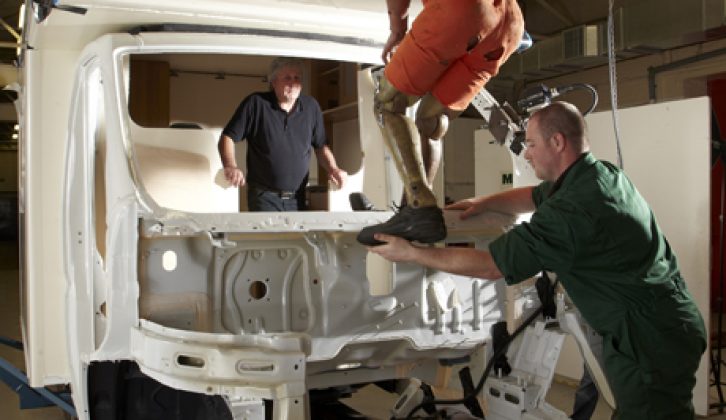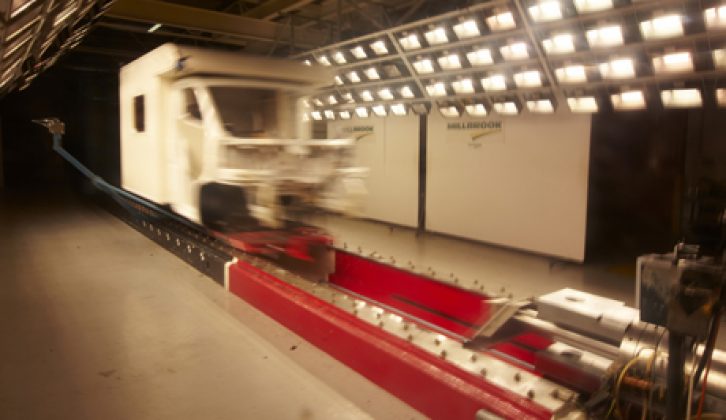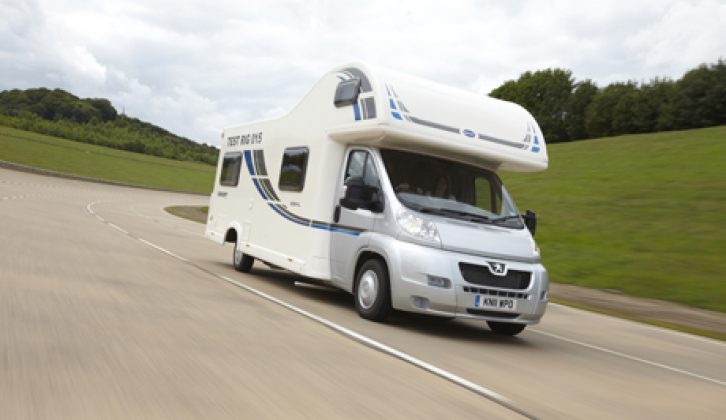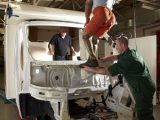Our Gentleman Jack Bancroft recently went undercover to spy on the prototype testing of the first motorhomes from highly regarded touring caravan manufacturer Bailey. Here he reports on how Bailey do things a little differently.
‘Flying pigs’: that’s the moniker the new range is affectionately known by among the highly committed and enthusiastic development team at Bailey motorhomes.
Why? Well, because leading dealers were known to opine that ‘pigs will fly before Bailey builds a motorhome’. So it gives me great pleasure to exclusively reveal that all the Gloucester Old Spots are fuelled and ready to taxi!
Right first time
If Bailey builds something, they build it right. The right way, using the right materials. It’s not that they have a sixth sense over what is going to work and what isn’t, nor is it because the factory workforce have bionic limbs.
The reason is that Bailey value research and development and spend more time, money and expertise on this than most, if not all, of their competitors. Thus it came as no surprise to learn during my visit to Millbrook proving ground that the Bailey team and their new motorhome prototypes are practically resident there.
Actually preparation for their new motorhome began a long time before the final decision to ‘go-ahead’ was taken. First, the switched-on management team was aware that they needed to expand their production facility as they were already at full stretch making their renowned award-winning touring caravan range – hence the purchase of an additional adjoining parcel of land, increasing by 40% the acreage at their South Liberty Lane home in Bristol.

Next, because motorhomes cover more miles than touring caravans, a more durable method of coachbuilding the body was a pre-requisite. These thoughts were occurring around the same time as their touring caravan designers were looking at a root and branch reform of construction. Not so much reform, more a total change of direction.
Initial in-house brainstorming sessions and research by experts at the University of Bath quickly revealed that there wasn’t much mileage in just improving existing methods; any improvement could only be slight. To produce a body that was destined to be in a different league to the others in terms of integrity (doesn’t leak), torsional rigidity (doesn’t flex) and is lighter (more payload), was going to require a far better method of joining the walls to each other and to the roof and floor.
Advancing with Alu-Tech
Thus Alu-Tech was born. Alu-Tech construction favours clamping together bonded panels such as the sidewall and roof with an aluminium extrusion, which is in turn held in place from the inside by a metal connecting bracket. The assembly is then locked together by a T-bolt fixing and a plastic cap covers the fittings so it all looks neat from the inside.
So far so good, but there’s more! There is no wood used in the construction; instead the framing battens are made from recycled plastic, which is stronger, lighter, better for the environment, and totally resistant to damage by water, in the case of a leak.
That said, a leak is highly unlikely with Alu-Tech because all exterior joints are covered by protective extrusions and there are less apertures made in the bodywork – remember, ‘holes’ are potential water ingress points – partly due to the internal fixing method and partly as a result of a policy to design them out. In fact, a typical traditionally-constructed Bailey body used to require 250 holes whereas the new Alu-Tech equivalent has just 20!
Fast forwarding
I witnessed the prototypes being subjected to ‘accelerated life testing’. Basically, they are driven around different test tracks which subject them to an exaggerated variety of challenging road surfaces including pavé, potholes, switchback, adverse cambers and kerb strikes. The frequency and speed these hazards are approached at means that each cycle of testing replicates at least three years of normal driving.

Before you ask, the other extreme of road use is also experienced, where they are subjected to the ‘funeral procession’ (constant stop-starts and extensive low-speed driving) and bumbling along in top gear. Barrelling around a banked race circuit at speeds that would lose you your licence is not in most owners’ driving repertoire, but it’s important because it proves that travelling at 70mph is not at the very edge of its capabilities, but that it will be a relaxed, safe and stress-free experience for both the driver and passengers, plus for the mechanicals.

Sound of Silence
Younger readers probably won’t have heard of them, but for us old hippies a nod to Simon and Garfunkel is always welcome. I couldn’t photograph this important feature of Bailey Motorhomes because it can’t be seen, but I was so grateful for it. Despite being driven enthusiastically over different road surfaces, the conversion was silent: quite simply, the quietest coachbuilt I’ve ever ridden in. In fact the contrast between my own and this was so apparent, I’ve resolved to do something about the racket in mine – the problem is I’ve just got used to it and lost motivation!
Snug as a bug
The Millbrook proving ground experiences is about far more than just on-the-road performance testing, though. All habitation systems are checked for safety and efficient operation and this includes extensive testing in the cold chamber. As well as internal temperature probes monitoring the effectiveness of the heat distribution and insulation, special thermal imaging photography helps with reducing heat loss and identifying thermal breaks.

Bailey had already examined its soft furnishing fabrics to make sure they exceeded the standards for being fire retardant, and all cabinetwork and furniture had been rigorously tested for efficiency, practicality, and durability. Indeed, it won a coveted FIRA (Furniture Industry Research Association) Gold Award. So it seems likely that when the design team members of the test team take them on an extended European tour for ‘in the field’ live-in tests, they’ll be as snug as the proverbial bug in a rug.
Serious about safety
Like the chanteuse Vanessa Williams, I’ve saved the best till last. As part of the Bailey’s rigorous testing programme, a fully-fitted body and cab skeleton were being subjected to the most stringent crash tests. Not content with just strain testing the seat belt mountings, Bailey has bravely gone for the real McCoy.
I’m pretty sure that Bailey is the only UK manufacturer to test a fully fitted motorhome to an impact of 20G. It’s not easy to make bought-in items – such as the kitchen white goods – stable in such an impact, but Bailey had already achieved this. Good for them, other manufacturers should follow their example.

On reflection
It was a huge privilege to go behind the scenes and witness at first hand the sheer depth of testing these newbies were being subjected to.
The initial range will consist of three popular layouts to be launched at the NEC show in October, with another two scheduled for next February. I predict Bailey will become a major player in the UK market especially when the expected value-for-money launch prices are factored in. Not the cheapest but among the best value for money around.
They wouldn’t be drawn on it, but my money is on Bailey offering a ten-year warranty against water ingress on their new motorhomes. This would be yet another reason why they’ll be on many a shortlist.
Keep reading Practical Motorhome magazine, and following this website, as we’ve been promised an early test of the first production examples. I can’t wait, I’ve already sharpened my elbows to get to the front of the queue.

























